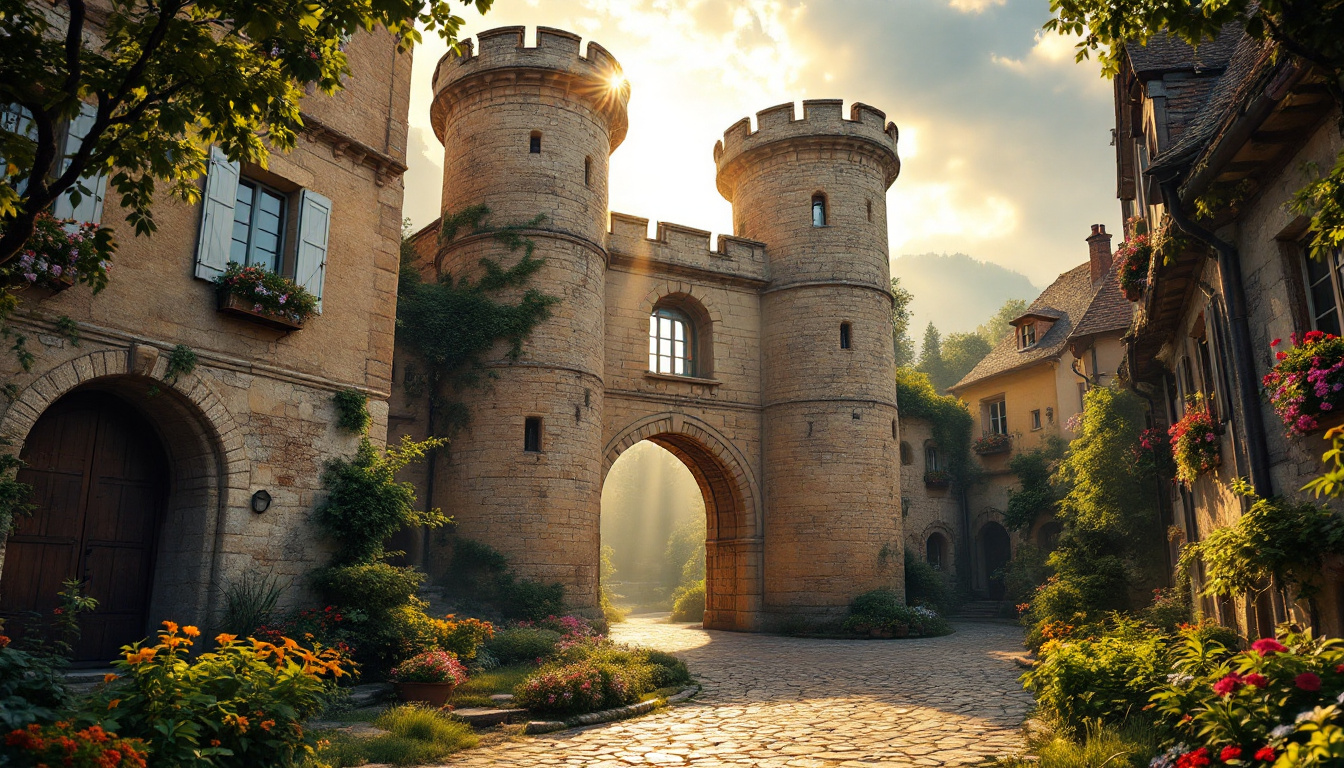Hidden in the Loire Valley of France, a 13th-century Carthusian monastery has transformed into one of the country’s most extraordinary villages. Sainte-Croix-en-Jarez isn’t just a place to visit—it’s a living museum where ancient monastery cells have become family homes, and cloistered courtyards serve as village squares.
A village born from sacred silence
What makes Sainte-Croix-en-Jarez truly unique is its remarkable origin story. When monks were evicted during the French Revolution in 1792, their monastery was divided and sold to families who repurposed the sacred spaces into a functioning village—a transformation that exists nowhere else in France and perhaps the world.
“Our village represents a continuous thread of history. The same stones that once witnessed monastic prayers now shelter generations of families,” explains Marie Dumont, a local guide whose family has lived in a converted monk’s cell for over a century.
Medieval architecture frozen in time
Walking through the imposing stone gateway flanked by round towers feels like stepping through a portal to medieval France. The village retains its original monastery layout with two main squares around which daily life unfolds. Inside, visitors discover richly decorated church stalls and 14th to 17th-century murals that silent monks once contemplated.
The vaulted kitchen with its Renaissance fireplace and the ancient bakery stand as testament to the monastery’s self-sufficient past. This architectural integrity earned Sainte-Croix-en-Jarez its place among France’s Most Beautiful Villages, a distinction shared with far fewer than 200 villages nationwide.
Where monastic cells became family homes
Perhaps most fascinating is how residents have adapted these sacred spaces for modern living. Former cells where monks once prayed and slept now house refrigerators and televisions. Windows that once framed contemplative views of nature now display cheerful curtains and flowerpots.
“There’s something profound about raising children in spaces designed for spiritual reflection,” says Jean-Pierre Martin, whose family has owned their portion of the monastery for three generations. “These thick stone walls have absorbed centuries of quiet contemplation—you can feel it.”
Exploring beyond the monastery walls
The surrounding Pilat Natural Regional Park offers dramatic mountain scenery perfect for hiking and cycling. Unlike grander natural wonders, these trails offer intimate connections with authentic rural France.
For those interested in fortress architecture beyond Sainte-Croix, nearby dramatic fortified towns complement the monastery’s defensive features with their own compelling histories.
Practical matters: Timing your visit
Access to interior buildings is primarily available through guided tours between April and September, with limited weekend availability in winter. Photographing the atmospheric exteriors is unrestricted, but interior photography is generally prohibited.
Pack a picnic lunch to enjoy in the peaceful surroundings—restaurant options are limited, but the setting compensates magnificently. The village particularly shines in morning light, when sunbeams illuminate ancient stonework and fewer visitors crowd the narrow passages.
A spiritual experience for secular times
Unlike spiritual monuments worldwide, Sainte-Croix offers something rarer: a glimpse of sacred architecture that has evolved to serve everyday life. There’s something profoundly moving about witnessing laundry hanging in spaces once dedicated to prayer.
Just as hidden beaches offer alternatives to tourist hotspots, Sainte-Croix-en-Jarez provides a different perspective on French heritage—one where history breathes through everyday life rather than being preserved behind velvet ropes.
In Sainte-Croix-en-Jarez, the sacred and secular dance together across centuries. As afternoon sun filters through ancient windows onto modern living rooms, visitors witness something increasingly rare: a place where history isn’t just displayed but lived, where medieval stones don’t just remember the past but actively participate in the present.
